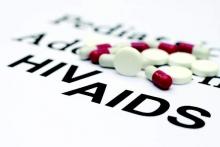A great volume of HIV and AIDS research enters the medical literature every month. It’s difficult to monitor everything, so here’s a quick look at some notable news items and journal articles published over the past few weeks.
The frequency of safety monitoring for HIV pre-exposure prophylaxis (PrEP) might need to be different between age groups, according to a recent study, and pharmacological measures can monitor for toxic effects as well as adherence.
A European research group found a beneficial effect of starting antiretroviral therapy before adolescence in perinatally infected individuals, and starting young people on boosted protease inhibitors, to maximize treatment response during this transitional stage of development.
Chinese investigators found that an online social entrepreneurship testing (SET) model to promote HIV and syphilis self-testing among Chinese men who have sex with men was acceptable and feasible, and they say that the model adds a new testing platform to the current testing service system.
A review analysis found that dolutegravir 50 mg given once daily, combined with an active background drug, is a better choice than raltegravir- or efavirenz-based regimens for treatment of HIV-1 infection, in terms of both efficacy and safety.
A recent study found that HIV suppression restores lung mucosal HIV-specific CD4+ T-cell multifunctional immunity and CD4:CD8 balance, often resolving CD8+ alveolitis in active smokers.
A study in Clinical Infectious Diseases found that only the Framingham general cardiovascular Risk Score (FRS) accurately estimated the risk of cardiovascular disease risk events in HIV patients, while the American College of Cardiology/American Heart Association Pooled Cohort equations (PCE), and the Data Collection on Adverse Effects of Anti-HIV Drugs (D:A:D) study equation underestimated risk.
A study in AIDS Care found a high burden of mental health disorders among harder-to-reach people living with HIV/AIDS (PHA), and suggests that PHA with at least one mental health disorder diagnosis are disproportionately affected by sexual violence and stigma.
Neurocognitive declines in HIV-positive patients may vary by domains of functioning and disparities may exist across subpopulations of the seropositive aging population, according to a recent study, and these challenges may exist even in those actively engaged in HIV care.
A high rate of recent HIV infection is potentially resulting in progressive deterioration of the overall HIV epidemic among men who have sex with men in China, according to a study in Infectious Diseases of Poverty. The authors said targeted interventions to address high-risk men who have sex with men including those having multiple partners, history of recreational drug use, and syphilis or HSV-2 infection are needed.
A recent study indicated that the variability in estimates of spontaneous viral clearance of hepatitis C virus infection – between HIV-positive men who have sex with men and people who inject drugs – suggests the impact of HIV coinfection and HCV reinfection.
A study published in the journal AIDS found that despite substantially higher CD4% at initiation of antiretroviral therapy, viral suppression was significantly slower among infants than older children.
Grip strength decline is accelerated in HIV-infected men, which may signal decreased life expectancy and lower quality of life with aging, according to an analysis by the Multicenter AIDS Cohort Study.
A study in HIV Medicine found that reference curves for CD4 T-cell count response aid the evaluation of the immune response in HIV-positive patients early after antiretroviral therapy initiation that leads to viral control.
According to WHO standards, Rwanda antenatal clinic HIV serosurveillance is ready to transition to prevention of mother to child transmission (PMTCT)-based serosurveillance.
Oxidized lipoproteins may contribute to persistent immune activation in HIV patients on antiretroviral therapy, a new study found.
A French study found that the rate of patients failing to return for the results of HIV, HBV, HCV, and syphilis testing is a problem, but the use of currently available technologies, such as phone texting, might be a partial solution in conjunction with rapid tests for diagnosis.
A 12-city U.S. research project on pre-exposure prophylaxis for HIV found that young men who have sex with men may need PrEP access in youth-friendly settings with tailored adherence support and potentially augmented visit schedules.
On Twitter @richpizzi


